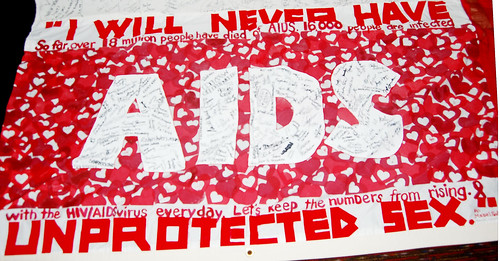Several campus offices collaborated last week to kick off a new tradition of HIV/AIDS awareness.

In honor of World AIDS Day, student organizations on Main Campus dedicated a full week to HIV/AIDS awareness and prevention programs last week.
Temple’s first World AIDS Week started as an idea from Kate Schaffer, the coordinator of Judicial Affairs in the Office of University Housing and Residential Life, to bring sections of the AIDS Memorial Quilt to Main Campus.
Comprised of 3-by-6-foot sections created by friends, family and loved ones of AIDS victims, the quilt is the largest ongoing community art endeavor in the world and serves as a poignant memorial to a disease that has many faces and even more stories.
Schaeffer said several Temple organizations and departments participate in HIV/AIDS awareness programs year-round. It wasn’t until this year, however, that a unified week was organized, rather than a series of disconnected programs.
Temple’s AIDS Week began with the viewing of the quilt and was followed by free HIV testing, sponsored by HEART, the Health Education and Awareness Resource Team, as well as various HIV/AIDS awareness organizations from around the city.
As part of AIDS Week, HEART program director Dina Stonberg hosted “Know Your Status Jeopardy,” a game intended to stress the importance of knowing your HIV status as the first line of prevention. Earlier in the week, the names of people killed by AIDS were read in the Underground at the Howard Gittis Student Activities Center.
Since HIV/AIDS came to American consciousness, the coverage of the effects of the disease on the population has steadily fallen, although the rates of AIDS diagnosis started to fall between 1993 and 1998, since 2000 the rates have stayed constant. Considering the technological advances in medicine and research, however, the rates seem high to activists.
The life of HIV, the virus that can cause AIDS, is complex. HIV is a highly variable disease, and there can be many different strains even within a single infected person.
Every person reacts to the virus differently, and for some, survival stories could be out of reach.
Today, according to the Centers for Disease Control one in five of the 1 million people living with HIV in the United States is unaware of his or her status. HIV is a preventable disease.
Mamaye Mesfin can be reached at mamaye.mesfin@temple.edu.



Be the first to comment